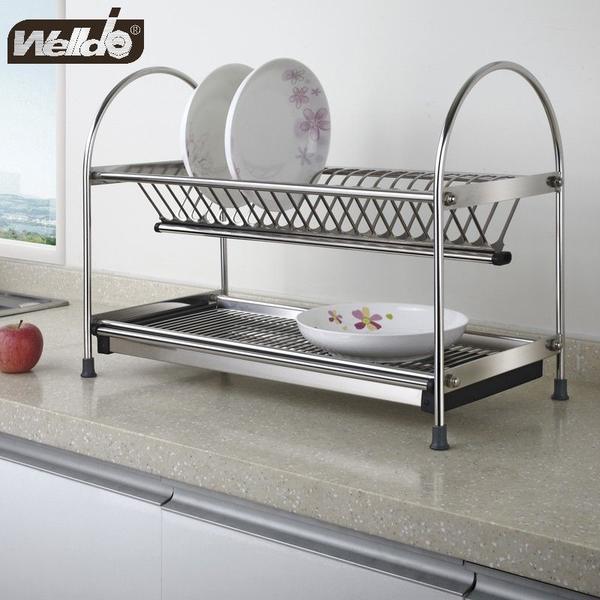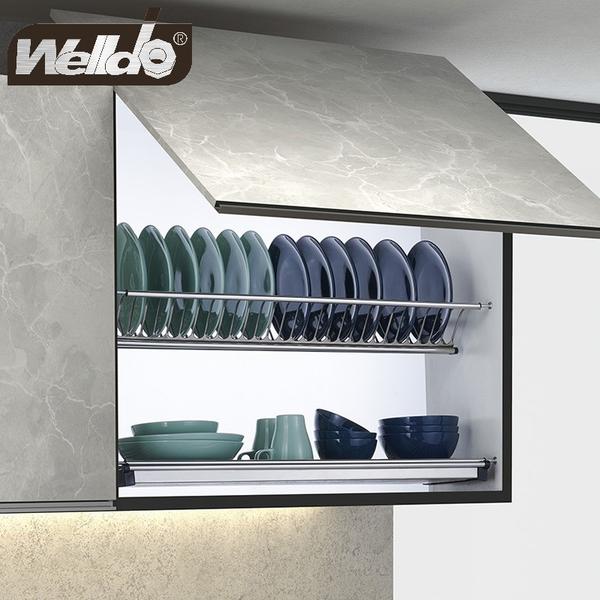
Precautions for Using Stainless Steel Dish Holder
Stainless steel dish holders are a common household item that is used to hold and dry dishes, cups, and utensils.
They are preferred over plastic or wooden dish holders due to their durability, sleek design, and resistance to rust and corrosion.
However, to ensure that your stainless steel dish holder lasts long and performs efficiently, it is important to take certain precautions.
Precautions for using Stainless Steel Dish Holder
We will discuss some of the precautions you should take while using a stainless steel dish holder here.
Clean and dry the dish holder regularly
The first and foremost precaution to take while using a stainless steel dish holder is to keep it clean and dry. After every use, wipe the dish holder with a clean, damp cloth to remove any water droplets or food particles that may have accumulated. This will prevent the growth of bacteria and keep the dish holder hygienic.
Avoid using harsh detergents
Stainless steel dish holders are prone to scratches, which can harbor bacteria and affect their longevity. Avoid using harsh detergents, bleach, or abrasive cleaners that can damage the surface of the dish holder. Instead, use mild dishwashing soap and a soft sponge to clean the dish holder.
Do not overload the dish holder
While stainless steel dish holders are durable, overloading them with too many dishes or utensils can cause them to bend or warp. This not only affects the efficiency of the dish holder but also makes it unsightly. To prevent this, use the dish holder within its capacity and avoid piling up too many dishes on it.
Use a drip tray
A drip tray is an essential accessory that can help protect your countertops or sink from water damage. When using a stainless steel dish holder, make sure to place a drip tray underneath it to catch any excess water that may drip from the dishes. This will prevent water damage to your countertop or sink and also keep your dish holder dry.
Do not expose the dish holder to extreme temperatures
Stainless steel dish holders are designed to withstand normal kitchen temperatures, but extreme temperatures can cause them to warp or crack. Avoid placing the dish holder near a heat source, such as a stove, oven, or microwave. Similarly, do not expose the dish holder to extremely cold temperatures, such as in a freezer.
Store the dish holder properly
When not in use, store the dish holder in a dry and well-ventilated area. Do not stack heavy objects on top of the dish holder, as this can cause it to bend or warp. If you need to stack the dish holder, do so with caution and ensure that it is properly supported.

Safety Concerns That Should Be Aware of When Using a Stainless Steel Dish Holder
While stainless steel dish holders are generally safe to use, there are a few safety concerns you should be aware of.
Sharp edges
Some stainless steel dish holders may have sharp edges or corners that can cause cuts or injuries. When handling the dish holder, be careful not to touch or bump into any sharp edges.
Weight limit
As mentioned earlier, overloading the dish holder can cause it to bend or warp. This can be dangerous if the dishes or utensils fall off the dish holder, potentially causing injury or damage.
Stability
The dish holder should be stable and secure on your countertop or sink. If it is wobbly or unstable, it may topple over, potentially causing injury or damage.
Corrosion
While stainless steel dish holders are resistant to corrosion, they can still corrode if exposed to certain chemicals or environments. Avoid using harsh chemicals or placing the dish holder in damp or humid environments for extended periods.
Taking these precautions will ensure that your stainless steel dish holder lasts long and performs efficiently.
Overall, by taking these safety concerns into consideration and using the dish holder as intended, you can safely and efficiently use a stainless steel dish holder in your kitchen.





